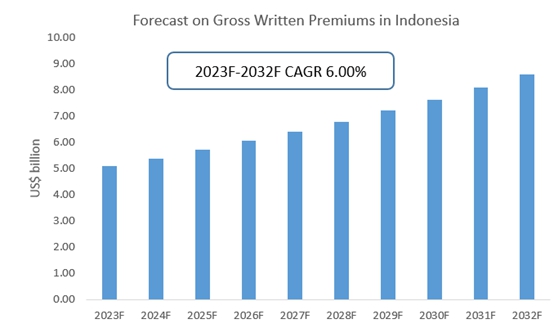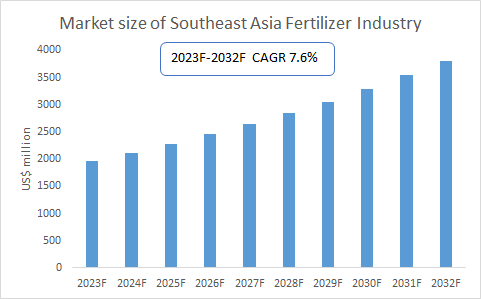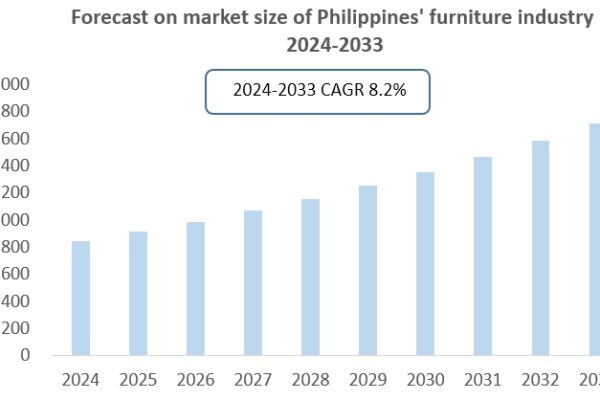1. Status Quo of Indonesia Insurance Industry
The Indonesia’s insurance industry has undergone significant growth and transformation over the years, evolving into a dynamic and competitive landscape. As of the latest assessments, the industry is marked by a robust regulatory framework, technological advancements, and an increasing awareness of the importance of insurance among the populace.
Indonesia’s insurance sector encompasses a wide range of products, including life insurance, general insurance, and sharia-compliant insurance (takaful). The regulatory authority, Otoritas Jasa Keuangan (OJK), plays a pivotal role in overseeing and regulating the industry, ensuring stability and protecting the interests of policyholders.
2. Market Size of Indonesia’s Insurance Industry
The market size of Indonesia’s insurance industry reflects the country’s economic development and the growing awareness of risk management. According to recent data, the industry has experienced steady growth in terms of gross written premiums (GWP). The increasing middle-class population, coupled with rising disposable incomes, has contributed to the expansion of the insurance market.
Life insurance products, offering protection and investment components, constitute a significant portion of the market. General insurance, covering non-life aspects such as property, motor, and health, also plays a crucial role. The market dynamics indicate a gradual shift towards comprehensive coverage and a more sophisticated understanding of insurance products among consumers.
See our recent report: Indonesia Insurance Industry Research Report 2023-2032

3. Regulatory Environment
The regulatory environment in Indonesia’s insurance industry is shaped by OJK’s policies and guidelines. OJK focuses on ensuring financial stability, consumer protection, and fostering healthy competition. The regulatory framework also supports the development of innovative insurance products and services.
Recent regulatory developments include efforts to promote digitalization within the industry. Insurtech initiatives are gaining traction, leading to increased efficiency in operations, distribution, and customer engagement. The government’s commitment to fostering a conducive environment for insurtech startups has positioned Indonesia as a regional leader in insurance technology.
4. Technological Advancements and Insurtech
The insurance landscape in Indonesia is witnessing a transformative wave driven by technological advancements. Insurtech, a fusion of insurance and technology, is reshaping traditional business models. Mobile apps, artificial intelligence, and data analytics are being leveraged to streamline processes, enhance customer experiences, and develop innovative insurance solutions.
Insurtech startups are gaining prominence, challenging established players and introducing disruptive ideas. This wave of innovation not only improves operational efficiency but also expands insurance accessibility to previously underserved segments of the population.
5. Top Players in Indonesia’s Insurance Market
The competitive landscape of Indonesia’s insurance market is characterized by a mix of established players and newer entrants. Some of the top players in the industry include:
a. Prudential Indonesia
Prudential Indonesia is a major player in the life insurance segment, offering a diverse range of products and services. The company’s commitment to customer-centric solutions and a solid financial standing has contributed to its leadership position.
b. Allianz Indonesia
Allianz is a prominent name in both life and general insurance sectors. With a global reputation for reliability, Allianz Indonesia has successfully positioned itself as a trusted choice for a wide range of insurance products.
c. AIA Financial
AIA Financial, part of the AIA Group, is a key player in the life insurance sector. The company emphasizes innovation and customer satisfaction, providing a comprehensive suite of insurance and investment products.
d. Asuransi Astra
Asuransi Astra is a leading general insurance company, known for its diverse range of non-life insurance products. The company’s strong market presence and commitment to quality service contribute to its competitive edge.
6. Outlook of Indonesia Insurance Industry in 2023 and Beyond
The outlook for Indonesia’s insurance industry in 2023 and beyond is marked by a combination of challenges and opportunities, driven by dynamic economic, technological, and regulatory factors.
a. Economic Resilience and Growth
Despite global economic uncertainties, Indonesia’s resilience and steady economic growth are expected to positively impact the insurance industry. A growing middle class, increased urbanization, and rising awareness of the importance of insurance as a risk management tool will likely contribute to an expanding customer base.
b. Continued Regulatory Focus
The regulatory landscape will continue to evolve, with OJK expected to maintain a keen focus on financial stability, consumer protection, and fostering innovation. Continued efforts to enhance the regulatory environment for insurtech and digital initiatives will likely shape the industry’s trajectory.
c. Digital Transformation and Insurtech Integration
The momentum of digital transformation and insurtech adoption is anticipated to accelerate. Insurers will likely invest in advanced technologies such as artificial intelligence, blockchain, and data analytics to enhance underwriting processes, improve customer experiences, and streamline operations. The integration of digital platforms is expected to make insurance products more accessible to a broader audience.
d. Emphasis on Customer-Centric Solutions
As customer expectations evolve, insurers are likely to place a greater emphasis on providing personalized and customer-centric solutions. Tailored insurance products, simplified purchasing processes, and enhanced digital interfaces are expected to become key differentiators in the competitive landscape.
e. Sustainability and Inclusive Insurance
The industry’s focus on sustainability and social responsibility is expected to grow. Insurers may increasingly incorporate environmental, social, and governance (ESG) considerations into their business strategies. Additionally, there may be a push towards developing more inclusive insurance products to address the needs of previously underserved segments of the population.
f. Challenges and Risk Mitigation
While opportunities abound, insurers will need to navigate challenges such as cybersecurity threats, regulatory compliance, and the evolving nature of risks. Proactive risk management strategies, robust cybersecurity measures, and ongoing regulatory compliance efforts will be essential for maintaining a resilient and secure insurance sector.
g. Potential for Industry Consolidation
The evolving landscape and increasing competition could lead to potential mergers and acquisitions within the industry. Insurers may seek strategic partnerships to strengthen their market positions, expand their product portfolios, and leverage synergies for improved operational efficiency.
In conclusion, the outlook for Indonesia’s insurance industry in 2023 and beyond is promising, with the industry poised for continued growth and transformation. As stakeholders adapt to emerging trends and challenges, a collaborative approach, technological innovation, and a commitment to meeting evolving customer needs will be key drivers for sustained success in the dynamic landscape of the Indonesian insurance sector.
In conclusion, Indonesia’s insurance industry is at the forefront of change, adapting to technological advancements and responding to the evolving needs of consumers. As the market continues to expand, collaboration, innovation, and regulatory support will play pivotal roles in shaping the future of the insurance landscape in Indonesia.
For more related information: Southeast Asia Insurance Industry Poised for Growth by 2032







Leave a Reply